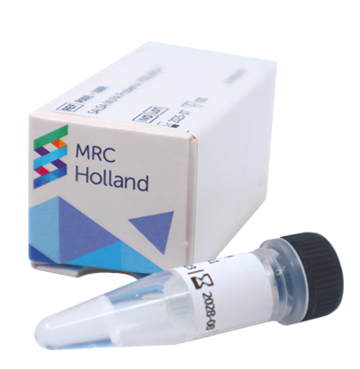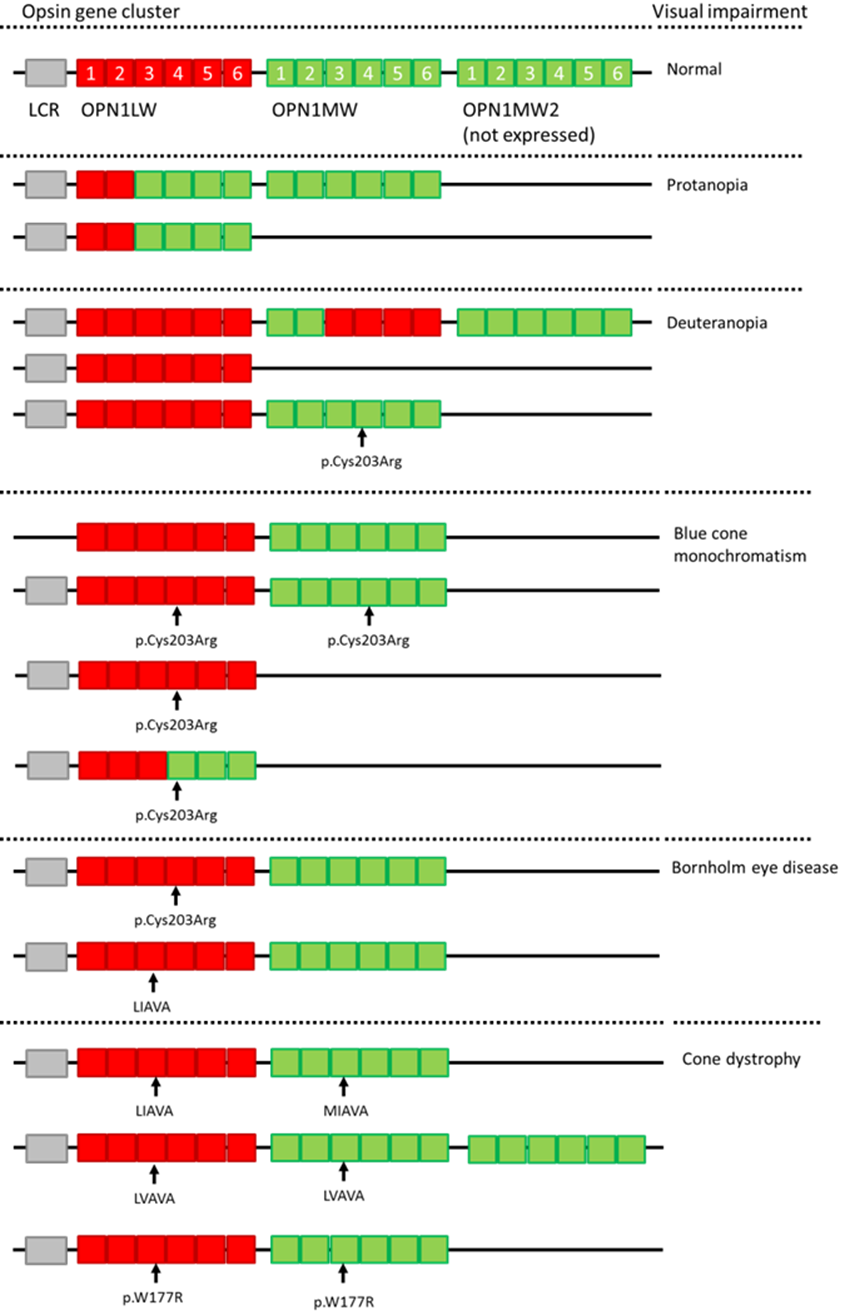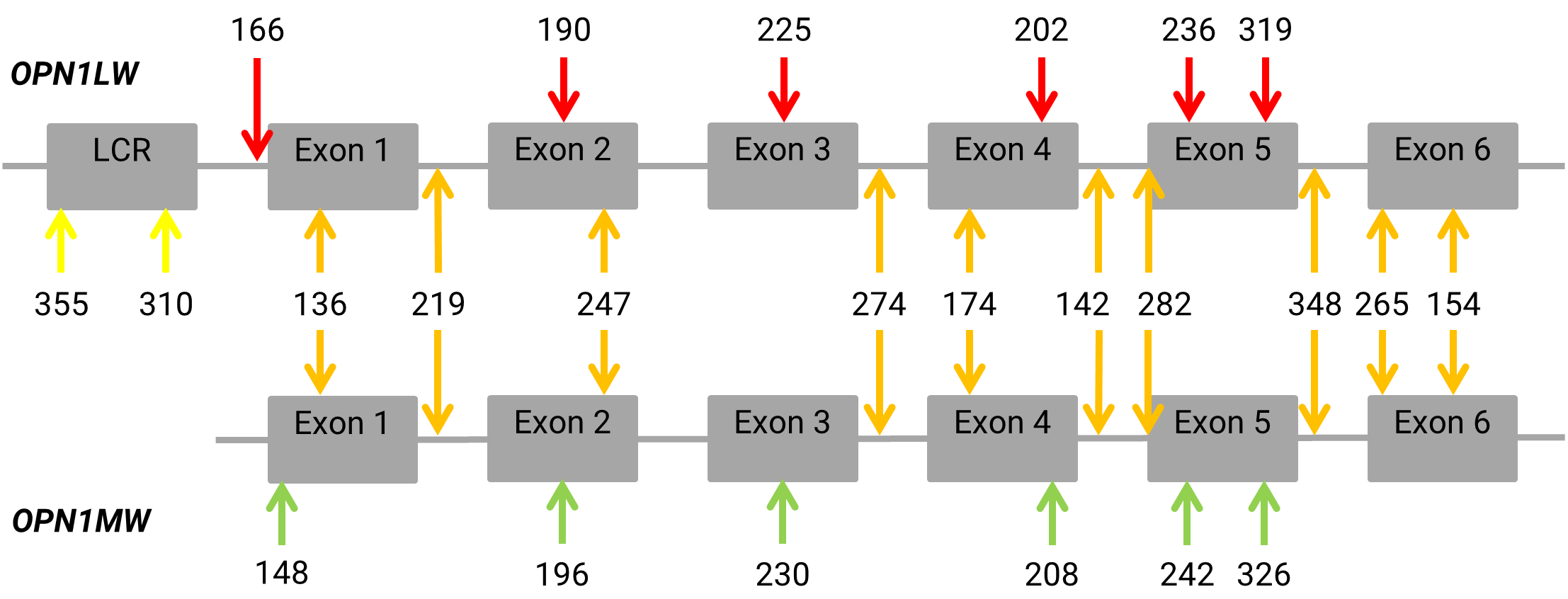The SALSA MLPA Probemix P497 Opsin is a research use only (RUO) assay for the detection of deletions or duplications in the OPN1LW and OPN1MW genes and their locus control region (LCR). This probemix can also be used to detect the wild type sequence of the p.Cys203Arg (c.607T>C) mutation in OPN1LW and OPN1MW.
Copy number changes in the X-chromosomal genes OPN1LW and OPN1MW result in a number of cone photoreceptor disorders, including red-green colour blindness, deuteranopia, protanopia, X-linked cone dystrophy, blue cone monochromatism, and Bornholm eye disease. Red-green colour blindness is the most common form and affects males much more often than females. Among populations with Northern European ancestry, red-green colour blindness occurs in about 1 in 12 males and 1 in 200 females. Affected individuals have trouble distinguishing between shades of red, yellow, and green. The majority of affected individuals are thought to have a stable condition, however, some develop evidence of progression with increasing visual acuity loss, macular atrophy, retinal pigmentation, and electrophysiological evidence of S cone and rod involvement (Gardner et al. 2014; Gardner 2016).
The close proximity (~23 kb) and extensive sequence identity (96-98%) of the OPN1LW and OPN1MW genes promotes meiotic mispairing of the genes and non-homologous recombination, and less commonly gene conversion events. This might lead to the formation of a hybrid pigment gene that contains part of both OPN1LW and OPN1MW. Also, some unusual combinations of individually benign nucleotide variations in exon 3 that can arise from recombination between OPN1LW and OPN1MW are associated with vision disorders. These pathogenic SNP interchange haplotypes include variants abbreviated as LIAVA, LVAVA and MIAVA for the amino acids specified by positions p.153, p.171, p.174, p.178, and p.180 where L is leucine, V is valine, I is isoleucine, A is alanine and M is methionine. These variants have shown to result in aberrant splicing and exon 3 skipping (Gardner et al. 2014; Greenwald et al. 2017; Verelli et al. 2004). Because of the frequent exchange, X chromosomes can have up to five OPN1MW copies, whereas individuals rarely have more than one OPN1LW copy per X chromosome.
Transcription of the OPN1LW and OPN1MW genes is regulated by a nearby region of DNA, known as the LCR (Figure 1). Only the two opsin pigment genes nearest the LCR, generally the OPN1LW gene and the first copy of the OPN1MW gene, are active in the retina and contribute to colour vision. Figure 2 gives an overview of the copy number changes and variants in OPN1LW and OPN1MW related to disease.
The OPN1LW gene (6 exons) spans ~14.8 kb of genomic DNA and the OPN1MW gene (6 exons) spans ~14.3 kb of genomic DNA, both are located on chromosome Xq28.
More information is available at https://ghr.nlm.nih.gov/condition/color-vision-deficiency.







